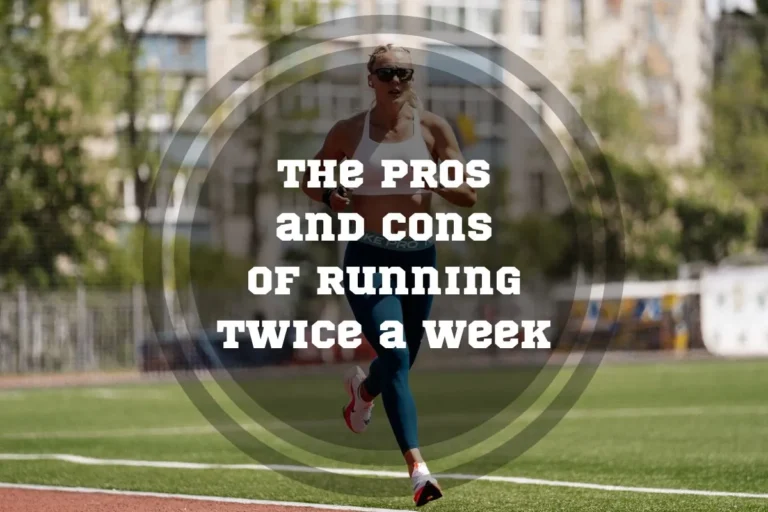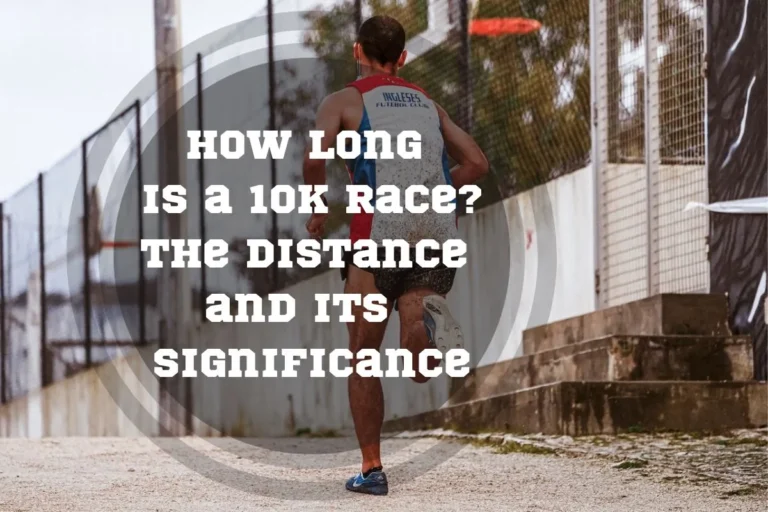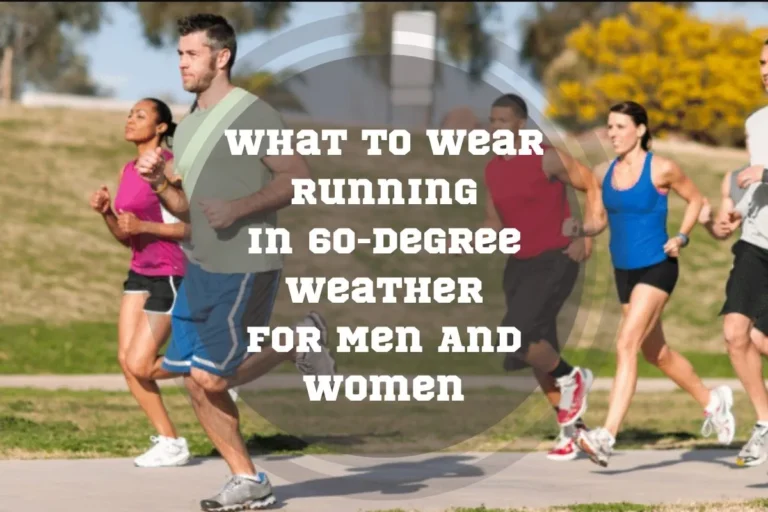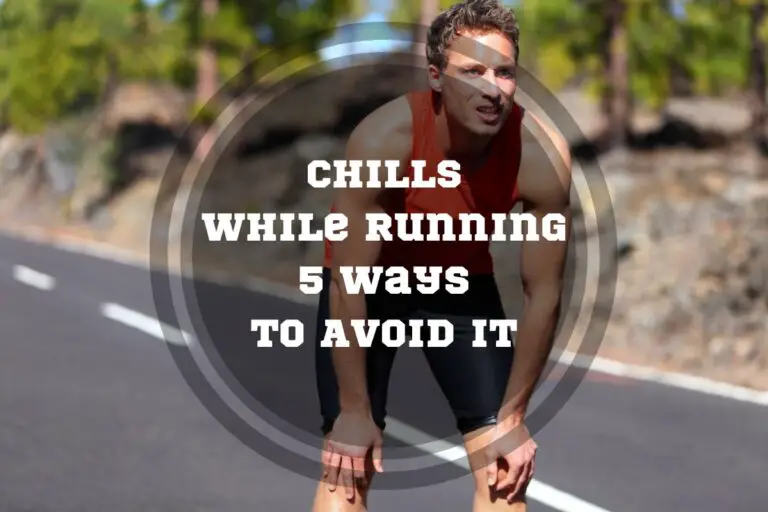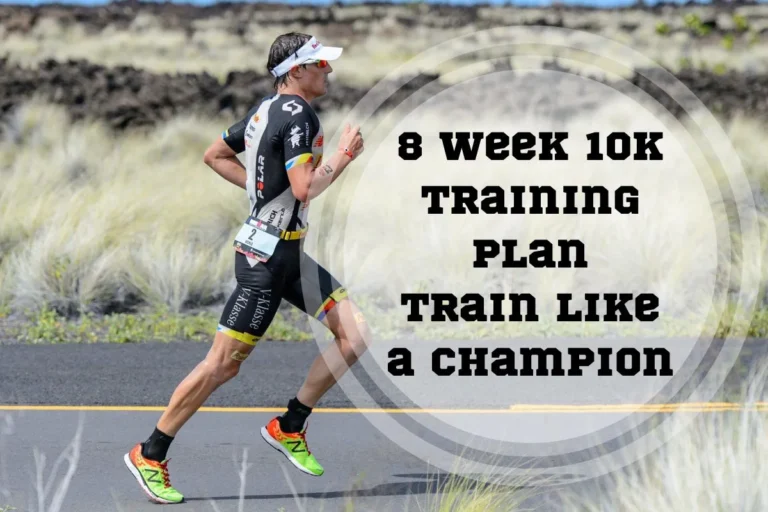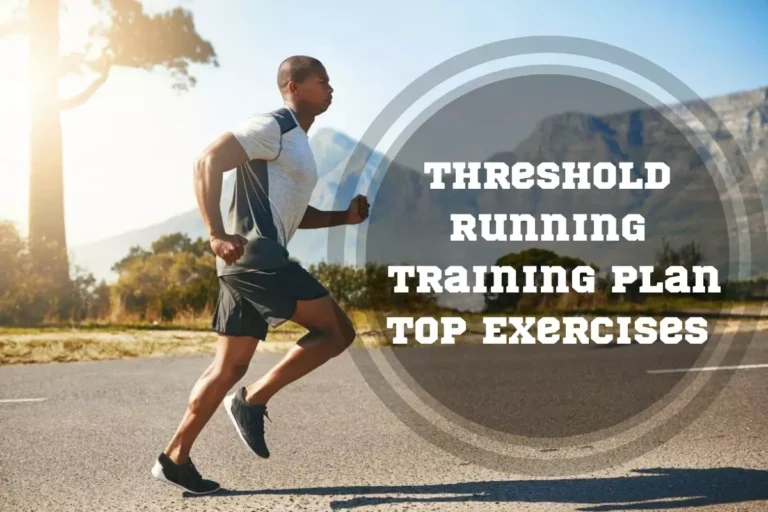How Many Miles Is 800m? Everything You Need to Know
Have you ever wondered just how many miles is 800m? Runners often ask this questions while planning their sprints or preparing for events.
If the metric system has you scratching your head, this blog will turn confusion into clarity, guiding you through everything from distance conversion to running tips.
Get ready – let’s dive into the world of middle-distance running!
How Long Is an 800 Meter Run?
How many miles is 800m? 800 meters is just under half a mile, exactly 0.497 miles. The average time for a 800m run in miles is about 3 minutes, but this varies by each person’s speed and fitness level.

Details about 800m Distance
Moving from the basics, let’s dive deeper into how 800 meters measures up in different units. How much is 800 meters in miles? In miles, 800m is just under half a mile – precisely 0.497 miles. If you’re more familiar with kilometers, that’s about 0.8 km.
However, when talking about number of steps, things are not so straightforward because it depends on each person’s stride length and speed.
A person with longer stride will cover 800m in fewer steps than someone with shorter one. Also, a sprinter might take fewer but faster steps compared to a marathon runner who keeps their pace steady over longer distances.
Fitness level plays its part too. Athletes in peak condition can surge ahead with powerful strides while those new to running might take more measured steps as they build their stamina and technique.
What Type of Running Distance Does 800m Belong to?
The 800-meter run is a middle-distance race. It’s perfect for athletes who like to mix speed with endurance. Many high school runners choose the 800 meters because it helps them build strength and stamina. This distance tests both their sprinting power and their ability to last longer on the track.
Running this distance is great for training different parts of your body’s energy systems. It makes you better at racing, whether you’re aiming for short sprints or longer runs. The 800 meters can be tough, but it teaches runners how to control their pace and use their energy wisely throughout the race.
How Long Is 800m Run?
Discovering the duration of an 800-meter dash is a journey through personal bests, athletic thresholds, and strategic pacing.
Runners find that their average time for 800 meters can change a lot. It depends on many things like how fit they are, if they have been training for speed or endurance, and even their age. People who run often and work on both sprinting fast and running long distances will usually do better.
Men and women tend to run the 800m at different speeds too. This is because of body differences and often how they train. Besides, young runners might be quicker than older ones as well.
Look at this simple table to see some key differences in 800m running time:
| Age | Men Beginners | Men Intermediate | Men Advanced | Women Beginners | Women Intermediate | Women Advanced |
|---|---|---|---|---|---|---|
| 20‑25 | 04:22 | 03:05 | 02:42 | 04:58 | 03:36 | 03:10 |
| 25‑30 | 04:23 | 03:05 | 02:42 | 04:58 | 03:36 | 03:10 |
| 30‑35 | 04:26 | 03:07 | 02:43 | 04:59 | 03:37 | 03:11 |
| 35‑40 | 04:32 | 03:12 | 02:47 | 05:03 | 03:40 | 03:13 |
| 40‑45 | 04:42 | 03:18 | 02:53 | 05:14 | 03:45 | 03:18 |
| 45‑50 | 04:52 | 03:26 | 03:00 | 05:26 | 03:55 | 03:22 |
| 50‑55 | 05:03 | 03:34 | 03:06 | 05:44 | 04:08 | 03:28 |
| 55‑60 | 05:16 | 03:43 | 03:15 | 06:02 | 03:22 | 03:50 |
| 60+ | 05:40 | 03:55 | 03:28 | 06:38 | 04:48 | 04:14 |
Women or men, beginners or advanced athletes, each runner has a unique mix of athletic performance traits making every race exciting.
Where Do Runners Run a Distance of 800m?
Whether sprinting around the vibrant buzz of an outdoor track or pacing through the echoing turns of an indoor arena, runners embrace the challenge of 800 meters across diverse venues. So how far is 800 meters on a track? Let’s discuss the details:
800 Meters on an Outdoor Track
How many laps is 800 meters on a track? Running 800 meters on an outdoor track puts your endurance to the test. This race takes you around the track two times. It’s a middle-distance run, which is a mix of sprinting and long-distance running.
Each runner has their own lane at the start of an 800m event, and they begin in a staggered formation to make it fair. The race is a big part of athletic competitions, calling for runners to manage their energy smartly over the entire distance.

800 Meters on an Indoor Track
Just as outdoor tracks have their own charm, indoor tracks offer a different running experience. An 800-meter run indoors usually happens on a track half the size of an outdoor one.
That means runners complete four laps to hit 800 meters since each lap is about 200 meters long. Races on an indoor track can be exciting because fans are closer, making the cheers loud and thrilling. However, turns are tighter, so maintaining speed without slipping takes skill and practice.
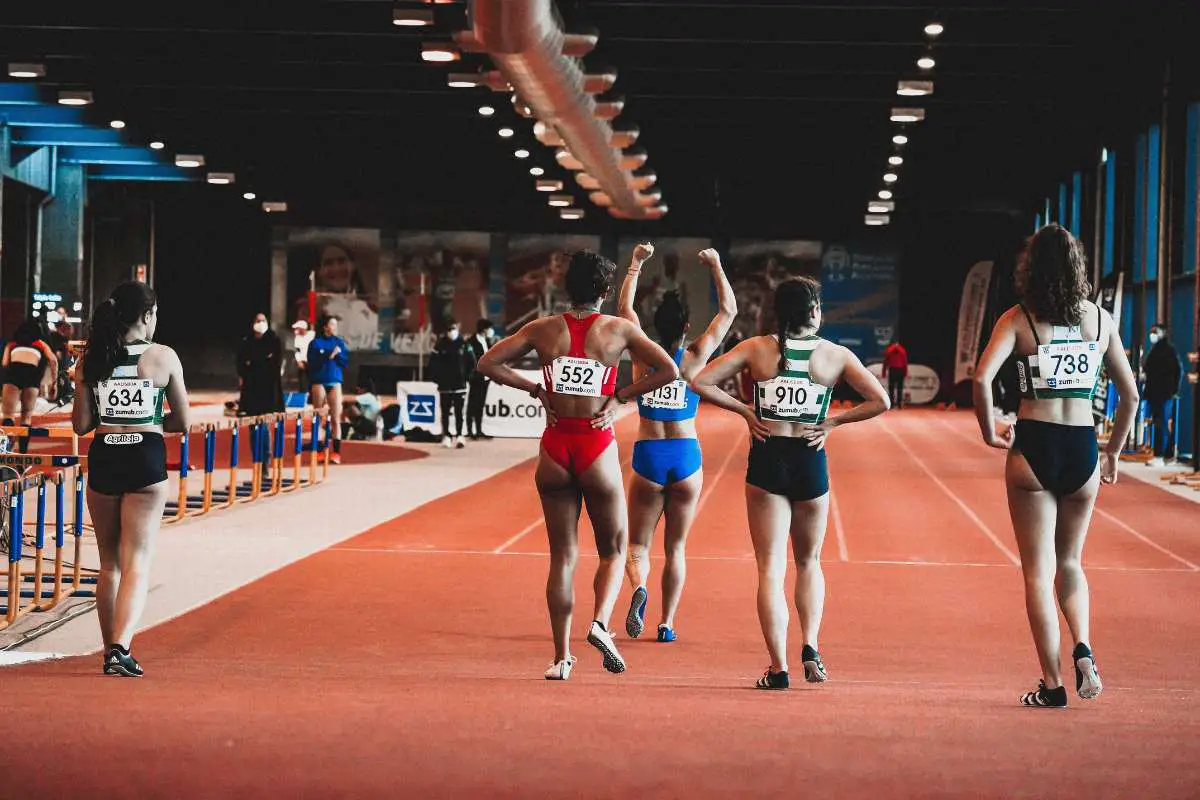
How Many Laps Is 800 Meters?
To figure out how many laps 800 meters is, you need to know the length of the track. If you’re running on a standard outdoor 400-meter track, just two laps will get you to 800 meters. That’s the distance most outdoor tracks measure for one lap. So, when you run twice around, you’ve got your 800 meters covered.
For those who race or train indoors, things can be different. An indoor track typically measures shorter than an outdoor one – often it’s just 200 meters per lap. This means if you’re aiming for 800 meters inside, you’ll be making four laps to hit your mark.
How To Run An 800-Meter Race: 6 Pro Tips
Unlock your potential for the 800-meter race with these pro tips that cater to every aspect of your performance:
1. Create a Training Schedule
Making a good plan for training is key to becoming better at running 800 meters. Think about mixing different workouts like endurance runs, sprint exercises, and interval training. Try plyometric exercises that boost how much power you can put into each step.
Your schedule should have days when you focus on building up the distance you can run without getting tired. In addition, add in some days for speed work so your legs learn to move faster.

Pro Tip:
Don’t forget about the rest days – one day per week for pro runners, and 1-2 days per week for beginners. Your body needs time to heal and get stronger after hard workouts.

Pro Tip:
Don’t forget about the rest days – one day per week for pro runners, and 1-2 days per week for beginners. Your body needs time to heal and get stronger after hard workouts.
2. Alternate 400m and 1600m Distances
Mix up your training by running both 400m and 1600m. This helps you get better at sprinting and builds endurance. For the shorter sprints, aim to run just a little slower than your best time.
For example, if you can do 400m in 49 seconds, try doing it in around 52-54 seconds during practice.
Training with longer distances prepares you for the whole race’s demands. If you’re good for a two-minute 800m, work on hitting around 4:08 for 1600m when practicing.
Subscribe to Our Running Newsletter!
Get free running tips from renowned professional athletes and discounts from top-notch brands.
3. Improve Sprinting Speed and Endurance
Switching from alternating distances gets you ready to focus on your sprinting speed and your staying power. To get faster, mix high-intensity intervals into your workouts. These short bursts of running full-out for 40-90 seconds can really ramp up your speed.
Boosting leg muscle strength is key to good endurance. Work on exercises that make your legs powerful enough to push off hard with each step.
4. Start with a Controlled Pace
Building speed and endurance sets the stage for mastering your pace. Running an 800-meter race smartly means you need to begin at a speed that feels strong but steady. This helps save energy for the second half of the race.
A good strategy is hitting your first lap in line with your best time at 400 meters, then aim for about 90-93% of that as you start off. This way, you set yourself up for an efficient performance.

5. Control Your Breathing
Good breath control can make a huge difference in an 800-meter race. You need to keep your breaths deep and steady as you run. This helps get more air into your lungs and gives your muscles the oxygen they need to work hard.
Think about breathing in a rhythm that matches your steps. Try counting to yourself – one-two on the inhale, then one-two on the exhale – to create a pattern. This keeps your breathing even and can stop you from getting too tired too fast.
6. Maintain Good Posture and Form
Once you’ve got your breathing right, it’s time to focus on keeping your body straight and strong. Good posture is key for any 800m runner aiming for success. You want to feel solid from the start, especially between the 200m and 500m marks where many runners begin to slow down.

Pro Tip:
Staying tall with shoulders back lets you breathe better and run more efficiently. Keep your head up, arms swinging smoothly, and hips pointed forward as if they’re cutting through air.

Pro Tip:
Staying tall with shoulders back lets you breathe better and run more efficiently. Keep your head up, arms swinging smoothly, and hips pointed forward as if they’re cutting through air.
This isn’t just about looking good. Proper form prevents injury and saves energy, giving you that extra kick when others start to fade.
The Best Result in the World In 800 Meters
David Rudisha set a world record in the 800 meters that lasted for 14 years. He was fast and smart on the track, making his mark in history with his 01:40.91 result in 2012. The female World Record belongs to Jarmila Kratochvílová. She covered 800m in 1:53.28 in 1983 and this result lasts for 40 years now.
Many runners have tried to beat their time. They train hard and race faster, but breaking records is tough.
Frequently Asked Questions about 800m Run in Miles
What Part of a Mile Is 800 Meters?
800 meters is almost the same as half a mile. To be more exact, 800m run in miles 0.497mi. So when you run or walk 800 meters, you are covering just under half the distance of a full mile. A mile has 1609.34 meters, and from that number, you can see how 800 meters is close to a mile’s halfway mark.
How Far Is 800 Meters to Walk?
Understanding that 800 meters is about half a mile sets the stage for walking this distance. If you head out for a walk, covering 800 meters might take you roughly 10 minutes. This time can change based on how fast or slow you move.
How Many Minutes Is 800 Meters?
Running 800 meters takes about 3 minutes on average. This time can change based on how fast you are running. If you run very fast, it might take less time, while slower runners may need more than 3 minutes to finish the distance.
Final Thoughts: How Many Miles Is 800m?
Now you know, 800m is just under half a mile. Think about it: only two laps around a standard outdoor track. Whether you’re racing or just training, this milestone is considered a middle-distance race.
Keep our simple tips in mind for your next run – they could help you get faster. Remember, practice makes perfect, so lace up those shoes and hit the track!
What is your 800m running time? How often do you practice this distance? Please share your experience in the comments below.
References:
- Jonathan P. Folland, Sam J. Allen, Matthew I. Black, Joseph C. Handsaker, Stephanie E. Forrester. “Running Technique is an Important Component of Running Economy and Performance.” Medicine and science in sports and exercise vol. 49,7 (2017): 1412-1423. doi:10.1249/MSS.0000000000001245
- Jerome Koral, Dustin J. Oranchuk, Roberto Herrera, Guillaume Y. Millet. “Six Sessions of Sprint Interval Training Improves Running Performance in Trained Athletes.” Journal of strength and conditioning research vol. 32,3 (2018): 617-623. doi:10.1519/JSC.0000000000002286
- Øyvind Støren, Jan Helgerud, Jan-Michael Johansen, Lars-Erik Gjerløw, Aanund Aamlid, Eva Maria Støa. “Aerobic and Anaerobic Speed Predicts 800-m Running Performance in Young Recreational Runners.” Frontiers in physiology vol. 12 672141. 21 May. 2021, doi:10.3389/fphys.2021.672141
- Pablo Prieto-González and Jaromir Sedlacek. “Effects of Running-Specific Strength Training, Endurance Training, and Concurrent Training on Recreational Endurance Athletes’ Performance and Selected Anthropometric Parameters.” International journal of environmental research and public health vol. 19,17 10773. 29 Aug. 2022, doi:10.3390/ijerph191710773
- “Running Times by Distance,” Running Level, https://runninglevel.com/running-times (accessed January 18, 2024)
- Photo from Pexels: Photo by Thomas Ronveaux, Andrea Piacquadio, RUN 4 FFWPU
If you have any questions or suggestions, you can contact us via email – [email protected]

